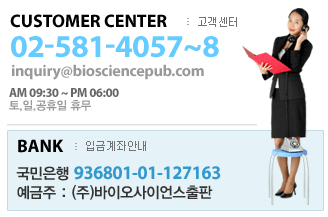Table of Contents
INTRODUCTION
I. SAFETY IN THE LABORATORY
Unit Introduction
SAFETY PART 1: CREATING A SAFE WORKPLACE
Fundamental Principles
Classroom Activity 1: Performing a Risk Assessment
Classroom Activity 2: Exploring the CDC and OSHA Websites
Classroom Activity 3: Responding to Emergencies
SAFETY PART 2: WORKING SAFELY WITH CHEMICALSClassroom Activity 4: Understanding the Chemicals with which You Work
Fundamental Principles
Classroom Activity 5: Personal Protection
Laboratory Exercise 1: Tracking the Spread of Chemical Contamination
Classroom Activity 6: Analyzing Safety Issues in a Laboratory Procedure
SAFETY PART 3: WORKING SAFELY WITH BIOLOGICAL HAZARDS
Fundamental Principles
Laboratory Exercise 2: Production of Bioaerosols and Factors Affecting Aerosol Production
Unit Discussion
Safety Contract, student copy
Safety Contract, to turn in
II. DOCUMENTATION IN THE LABORATORY
Unit Introduction
Classroom Activity 7: Be an Auditor
Classroom Activity 8: Writing and Following an SOP
Laboratory Exercise 3: Keeping a Laboratory Notebook
Unit Discussion
III. METROLOGY IN THE LABORATORY
Unit Introduction
Laboratory Exercise 4: Recording Measurements with the Correct Number of Significant Figures
Classroom Activity 9: Constructing a Simple Balance
Laboratory Exercise 5:Weight Measurements 1; Good Weighing Practices
Laboratory Exercise 6: Weight Measurements 2; Performance Verification
Laboratory Exercise 7: Volume Measurements 1; Proper Use of Volume Measuring Devices
Laboratory Exercise 8: Volume Measurements 2; Performance Verification of a Micropipette
Laboratory Exercise 9: Measuring pH with Accuracy and Precision
Unit Discussion
IV. SPECTROPHOTOMETRY
Unit Introduction
Laboratory Exercise 10: Color and the Absorbance of Light
Laboratory Exercise 11: Concentration, Absorbance, and Transmittance
Laboratory Exercise 12: Preparing a Standard Curve with Food Coloring and Using it for Quantitation
Classroom Activity 10:Beer’s Law and Calculating an Absorptivity Constant
Laboratory Exercise 13: Determination of the Absorptivity Constant for ONP
Unit Discussion
V. BIOLOGICAL SOLUTIONS
Unit Introduction
Classroom Activity 11: Getting Ready to Prepare Solutions with One Solute: Calculations Classroom Activity 12: Getting Ready to Prepare Solutions with One Solute: Ordering Chemicals
Laboratory Exercise 14: Preparing Solutions with One Solute
Laboratory Exercise 15: Preparing Solutions to the Correct Concentration
Laboratory Exercise 16: Working with Buffers
Laboratory Exercise 17: Preparing Breaking Buffer
Laboratory Exercise 18: Preparing TE Buffer
Laboratory Exercise 19: More Practice Making a Buffer
Laboratory Exercise 20: Making a Quality Product in a Simulated Company
Unit Discussion
VI. ASSAYS
Unit Introduction
Laboratory Exercise 21: Two Qualitative Assays
Laboratory Exercise 22:UV Spectrophotometry of DNA; Quantitative Applications
Laboratory Exercise 23:UV Spectrophotometry of DNA, RNA, and Proteins; Qualitative Applications
Laboratory Exercise 24: Using Spectrophotometry for Quality Control; Niacin
Laboratory Exercise 25: A Quantitative Protein Assay; Learning the Assay
Laboratory Exercise 26: Exploring Assay Verification
Laboratory Exercise 27: The Beta-Galactosidase Enzyme Assay
Laboratory Exercise 28: Comparing the Specific Activity of Two Preparations of Beta-Galactosidase
Unit Discussion
VII. SEPARATION METHODS
Unit Introduction
Classroom Activity 13: Separating Materials Using a Centrifuge, Planning
Laboratory Exercise 29: Separation of Two Substances Based on Their Differential Affinities for Two Phases
Laboratory Exercise 30: Separation of Dyes Using Paper Chromatography
Laboratory Exercise 31: Separating Molecules by Agarose Gel Electrophoresis
Laboratory Exercise 32: Using Agarose Gel Electrophoresis to Perform an Assay
Laboratory Exercise 33: Optimizing Agarose Gel Electrophoresis
Laboratory Exercise 34: Quantification of DNA by Agarose Gel Electrophoresis
Unit Discussion
VIII. GROWING CELLS
Unit Introduction
WORKING WITH BACTERIAL CELLS
Laboratory Exercise 35: Aseptic Technique on an Open Lab Bench
Laboratory Exercise 36: Working with Bacteria on an Agar Substrate; Isolating Individual Colonies
Laboratory Exercise 37: Using a Compound Light Microscope
Laboratory Exercise 38: Gram Staining
Laboratory Exercise 39: Making Phosphate Buffered Saline
Laboratory Exercise 40: The Aerobic Spread Plate Method of Enumerating Colony Forming Units
Laboratory Exercise 41: Generation of an E. coli Growth Curve
WORKING WITH MAMMALIAN CELLS
Laboratory Exercise 42: Aseptic Technique in a Laminar Flow Hood
Laboratory Exercise 43: Making Ham’s F12 Medium from Dehydrated Powder
Laboratory Exercise 44: Examining, Photographing, and Feeding CHO (Chinese Hamster Ovary) Cells
Laboratory Exercise 45: Counting Cells Using a Hemacytometer
Laboratory Exercise 46: Subculturing CHO Cells
Laboratory Exercise 47: Preparing a Growth Curve For CHO Cells
Unit Discussion
APPENDICES
I Materials and Supplies that are Assumed to be Present in Your Laboratory
II Calculating Standard Deviation
II Periodic Table of Elements
{교재 사용시 강의 자료 문의 바랍니다.}
상품정보고시
| 제품명 |
Laboratory Manual for Biotechnology and Laboratory Science: The Basics |
| 판매가격 |
40,000원 |
| 제조사 |
Benjamin Cummings |
결제후 2~5일 이내에 상품을 받아 보실 수 있습니다.
국내 최대의 물류사 CJ택배를 통하여 신속하고 안전하게 배송됩니다.
3만원 이상 구입시 무료배송입니다.
(제주도를 포함한 도서,산간지역은 항공료 또는 도선료가 추가됩니다.)
결제방법은 신용카드, 국민/BC(ISP), 무통장입금, 적립금이 있습니다.
정상적이지 못한 결제로 인한 주문으로 판단될 때는 임의로 배송이 보류되거나,주문이 취소될 수 있습니다.




